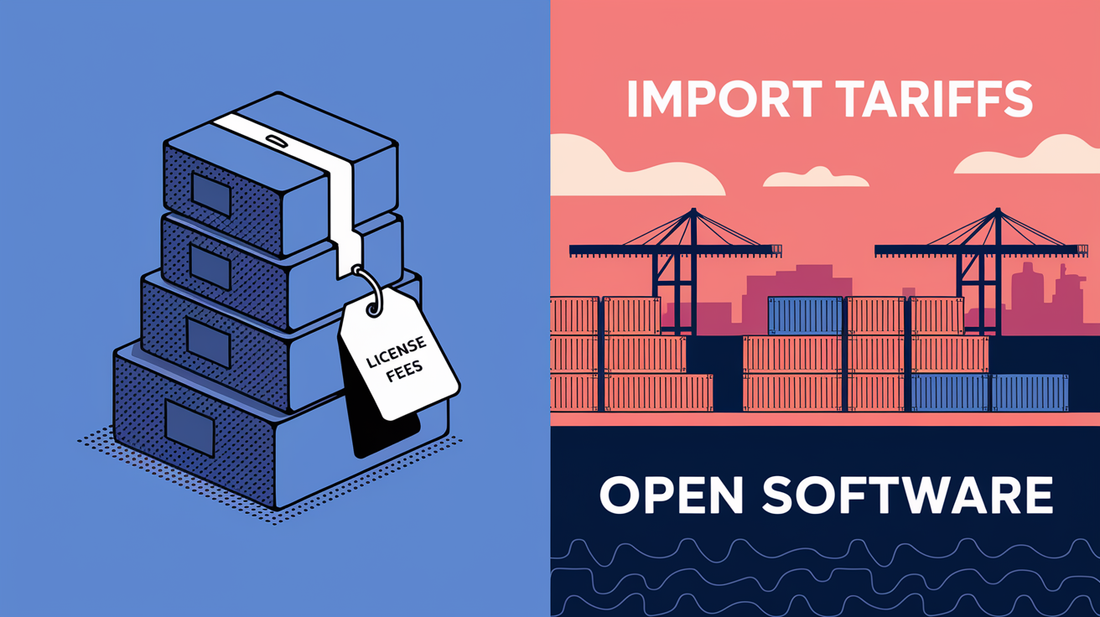by Adlane Fellah, Chief Analyst
As the demand for seamless connectivity continues to grow across multifamily and commercial developments, managed Wi-Fi providers are navigating a complex landscape of rising costs, evolving technology standards, and changing customer expectations. From the impact of global tariffs to the promise of open-source infrastructure, the business of managed connectivity is being reshaped.
At the same time, end-user behavior is shifting. Residents and tenants increasingly expect fast, reliable, always-on internet as a baseline utility—on par with electricity and water. As a result, property owners and developers are turning to managed Wi-Fi providers not just for connectivity, but for competitive differentiation and long-term value creation.
License Fees: Time to Rethink the Model?
One of the most pressing issues for managed service providers (MSPs) is the growing burden of recurring license fees. Traditionally, vendors have charged monthly or annual fees per access point for management, analytics, or authentication services. But with networks scaling into the tens of thousands of devices, this model is increasingly untenable.
These fees, once manageable at smaller scales, become significant operational costs in large-scale environments. For providers rolling out new deployments or expanding existing footprints, the compounding effect of license fees can easily erode profitability or force difficult trade-offs between feature sets and financial viability.
Service providers are seeking alternatives: building in-house tools, investing in perpetual licenses, or negotiating flexible terms. The goal is clear—achieve long-term cost control while maintaining performance and support. In parallel, some are shifting toward white-labeled platforms or open-source systems that offer greater transparency and customization without the recurring costs.
Tariffs and the Supply Chain Crunch
Recent tariff increases on network equipment—particularly on hardware sourced from Asia—are driving up capital costs across the board. Whether sourcing name-brand access points or cost-effective ODM hardware, providers face tighter margins and slower procurement cycles.
Tariffs, often as high as 46%, not only increase the upfront cost of hardware but can also delay project timelines due to extended lead times or last-minute sourcing challenges. These pressures are compounded by global supply chain instability, further constraining availability and increasing the appeal of alternative sourcing strategies.
To mitigate these risks, providers are exploring multi-vendor procurement models, leveraging both domestic and international suppliers, and even pre-purchasing equipment in bulk when possible. The ability to mix and match vendors based on price, availability, and performance is becoming a strategic advantage in an industry that once defaulted to single-vendor loyalty.
Open Software: Flexibility with Control
As software-defined networking becomes the norm, open-source alternatives are gaining traction. Platforms like OpenWiFi, FreeRADIUS, and PacketFence are now powering enterprise-grade deployments in sectors ranging from education to hospitality and residential real estate.
These tools offer several benefits:
- No per-AP licensing fees
- Transparent architecture and community-driven development
- Greater control over network behavior and upgrades
- Reduced vendor dependency and better integration options
For example, dynamic pre-shared key (DPSK) authentication—often delivered via costly cloud platforms—can now be implemented in-house using open tools, improving both cost-efficiency and uptime. In some cases, organizations are choosing to store DPSKs directly on access points to remove controller dependencies and improve resilience.
This kind of shift toward open infrastructure not only reduces ongoing expenses but also empowers technical teams to innovate more rapidly, integrating with ERP systems, automating provisioning, and embedding network intelligence into broader operational workflows.
Vendor Neutrality & Modular Design
Gone are the days of single-vendor ecosystems. Forward-looking providers are embracing open standards and API-first design. This allows them to integrate access control, video surveillance, smart building systems, and Wi-Fi management into one unified platform.
A modular approach enables better interoperability, simplifies vendor replacement, and reduces dependence on any one technology provider. In practice, this means combining best-of-breed components—routers, switches, access points, IoT sensors—into a cohesive and manageable network without vendor lock-in.
More importantly, modular design aligns with long-term asset management strategies. As buildings evolve, usage patterns shift, and new technologies emerge, modular infrastructure provides the agility to adapt without complete system overhauls. This future-ready approach not only saves money but also enables innovation.
The Road Ahead
The future of managed Wi-Fi lies in flexibility, transparency, and operational control. As the market matures, customers are demanding more than just coverage—they want reliability, real-time analytics, seamless onboarding, and platform agility.
To stay competitive, providers must:
- Reevaluate recurring license commitments
- Build tariff-resilient procurement strategies
- Embrace open-source and interoperable solutions
- Invest in scalable, integrated network operations platforms
- Prioritize customer experience and support responsiveness
Forward-thinking MSPs are also investing in automation and AI-powered analytics. These tools can identify anomalies, predict outages, and dynamically optimize network performance without manual intervention. When layered over an open, API-rich architecture, such intelligence enables proactive service delivery and operational scalability.
Ultimately, the shift underway in managed Wi-Fi mirrors broader digital transformation trends: from rigid, closed systems to open, adaptable platforms built for long-term growth. As new standards like Wi-Fi 7 emerge and demand continues to grow, the pressure to modernize will only intensify.
The era of vendor lock-in is ending. The next generation of managed Wi-Fi will be open, agile, and built to last—empowering providers to deliver more value, more reliably, and with fewer limitations than ever before.
To discuss these trends and more, you can book an intro meeting with me.
